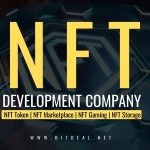From Concept To Collectible: Exploring Key Features In NFT Development
In the dynamic world of digital assets, Non-Fungible Tokens (NFTs) have emerged as a game-changer, revolutionizing the way we perceive and exchange value. From art and collectibles to virtual real estate and beyond, NFTs have gained immense popularity and attracted attention from creators, collectors, and investors alike. As the demand for NFTs continues to soar, it becomes essential to understand the must-have features that can elevate the development of these unique digital assets.
In this blog post, we will explore the key features that contribute to the success of NFT development and provide an unparalleled user experience.
Interoperability:
Interoperability is a crucial feature for NFT development. Ensuring that NFTs can seamlessly interact with various platforms, marketplaces, and blockchain networks expands their utility and enhances liquidity. Standards like ERC-721 and ERC-1155 enable interoperability and compatibility, allowing NFTs to be easily traded, transferred, and utilized across different ecosystems.
Customizability:
The ability to create customizable NFTs adds a layer of uniqueness and personalization to the digital assets. Offering options to modify certain attributes, such as appearance, characteristics, or traits, empowers creators to deliver exclusive and diverse NFT experiences. Customizability can range from simple visual variations to more complex interactive features, enhancing engagement and value for collectors.
Scarcity and Rarity:
Scarcity and rarity are fundamental aspects that drive the value of NFTs. Implementing features that enable limited supply and controlled issuance of NFTs can significantly increase their desirability. Utilizing mechanisms like smart contracts to enforce scarcity, time-limited editions, or provable rarity based on specific criteria can create a sense of exclusivity and drive demand among collectors.
Metadata and Intellectual Property Protection:
Ensuring robust metadata standards and intellectual property protection mechanisms is crucial for NFT development. Properly documenting relevant information about the NFT, including provenance, ownership, creator details, and additional attributes, adds transparency and authenticity to the asset. Implementing features like digital signatures and blockchain-based timestamping can help protect the intellectual property rights of creators and establish trust in the marketplace.
Fractional Ownership and Secondary Market Support:
Enabling fractional ownership of NFTs allows multiple individuals to own a fraction or share of a particular asset, unlocking new opportunities for investment and collaboration. Additionally, facilitating seamless secondary market support, including royalties and commissions for creators, promotes a thriving ecosystem and incentivizes further creation and innovation.
Cross-Chain Compatibility:
As the NFT landscape expands across different blockchain networks, cross-chain compatibility becomes crucial for broadening accessibility and reach. Incorporating features that allow NFTs to be minted, traded, and utilized on multiple blockchains expands the potential user base and eliminates limitations imposed by a single blockchain network.
Conclusion:
In the world of NFT development, incorporating the must-have features discussed above can elevate the value, functionality, and desirability of digital assets. Interoperability, customizability, scarcity, metadata protection, fractional ownership, and cross-chain compatibility empower creators and collectors to engage with NFTs in innovative ways. By harnessing these features, NFT developers can unlock the full potential of this exciting technology, shaping the future of digital ownership and revolutionizing various industries along the way.
Reach out to the leading NFT Development Company to know more about NFT development services.


